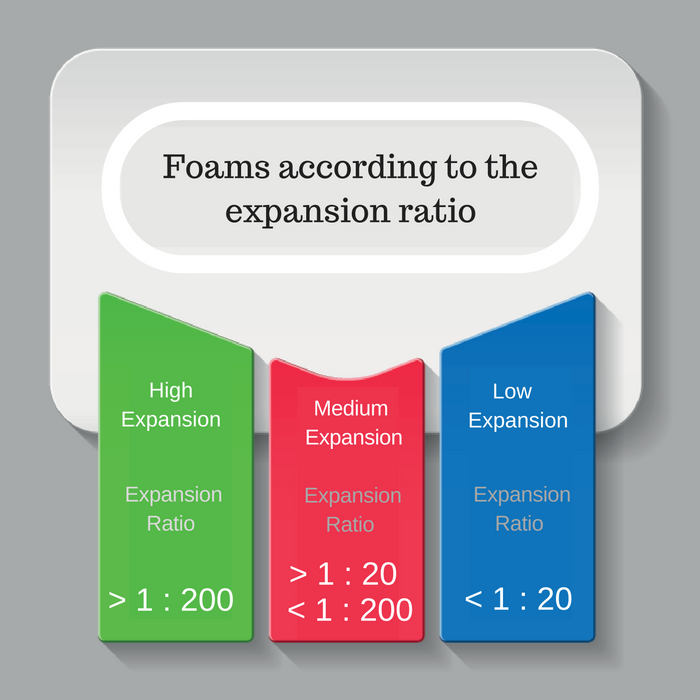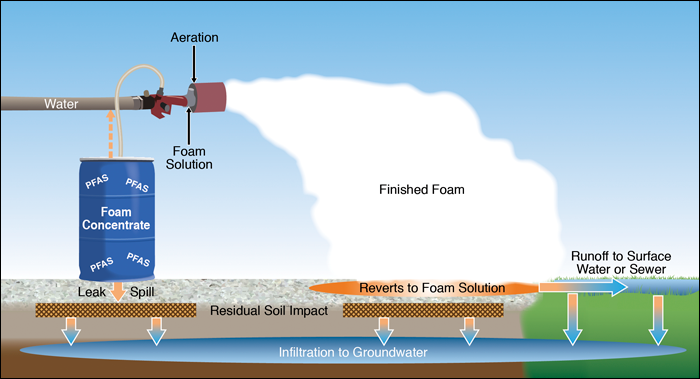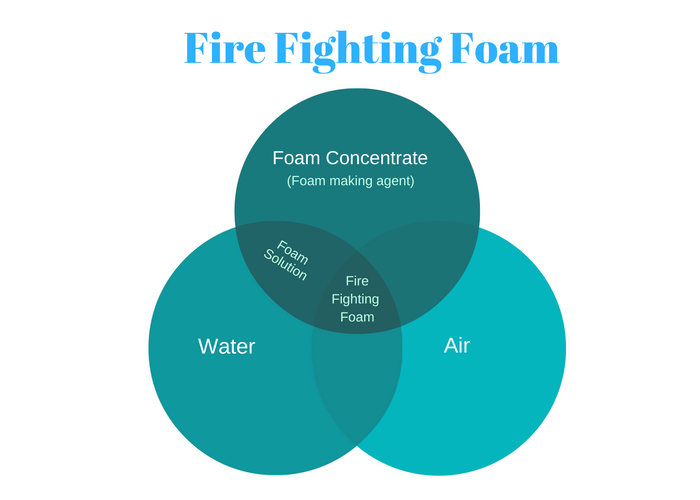class a foam percentages
The ratio of class a foam concentrate to water is typically 01 to 10 percent. As a synthetic based foam concentrate class a foam is applied at low mix ratios ranging from 01 to 10 see proportioning rates below.

Foam Magnetic Fraction Circles Fraction Circles Educational Insights Fun Fractions
The manufacturer through testing has determined at what percentage foam should be used.

. When mixed in correct. Costs for training Most departments did not quantify the cost of training their personnel to operate class A foam systems. Class A foam can be produced using numerous types and configu-rations of equipment which are discussed later in some detail.
State Sites Section Supervisor. 29 Hazen Drive PO Box 95. Field and laboratory tests show that water mixed with only 01-10 foam concentrate is often 3 to 5 times more effective than plain water.
Created to perform specifically on Class A combustible materials ANSUL-A foam is compatible for use in compressed air foam systems CAFS over the use range of 01 to 10. Some of the reasons for the firefighter aversion to using Class B foam may be from a lack of experience with it both in training and in actual incidents. As a carbon-loving solution Class A foam soaks into solid combustible materials by breaking down the surface tension of the water.
Six percent 6 concentrates are mixed with water at a ratio of 94 parts water to 6 parts foam concentrate. Any other percentages are considered running the foam too lean or too rich and are not effective. These are the most effective percentages based upon the foam manufacturers recommendations.
This is a biodegradable mixture of foaming and wetting agents. Effective compressed-air foam for fire attack can be created through a 1 ¾ line using a smooth-bore nozzle with a 1516 tip flowing. Into the fuels far more rapidly.
When proportioned with water Class A concentrates reduce the surface tension of the solution allowing greater penetration of the foam into most Class A fuels. PHOS-CHEK WD881 is highly effective for fighting Class A fires when mixed with water at use rates of 01 to 10. CHEMGUARD Class A concentrates are effective in fighting many deep-seated.
CA is 3 to 5 times more effective than plain water. Class A foam first developed in the. With regular AFFF foam it can be metered at 1 percent 3 percent or 6 percent.
Ad Put Your Trust in the Top Brands. It should not be used on fires involving ethanol-gasoline blends containing more than 10 percent ethanol. When proportioned with water Class A concentrates reduce the solution surface tension and allow greater penetration of the foam into most Class A fuels.
Rural firefighters who must carry their own water especially benefit from the enhanced effectiveness of adding PHOS-CHEK WD881 Class A foam to their water. A common rate for initial attack is 05 overhaul 02 and exposure protection 10. Class b foam on the other hand repels carbon.
In reality Class B foam applications are fairly simple. Class A Foam Concentrate. Chemguard CA foam concentrate is a combination of foaming and wetting agents for use on wood paper textiles wild land fires wooden structures and more.
It has proven effectiveness in many applications including Compressed Air Foam Systems CAFS structural firefighting forest fire suppression and prescribed burning mine fires industrial Class A fires and for extinguishing hydrocarbon spill fires. Difference was noted with nozzle-aspirated class A foam. Fire Cap Plus A and B product is UL approved and are certified for use at 025 for Class A fires and 03 for Class B fires.
The basic difference is how the foams react to carbon. The proportion of Class A foam concentrate to water is dictated by use. It is used at application rates ranging from 01 to 10 percent.
SKUM Class A foam concentrates are a mixture of foaming and wetting agents used in a variety of firefighting applications. This type of agent is very similar to. It helps the water penetrate the burning material to quickly suppress the fire and prevent rekindles.
Available in either a 1 3 or 6 type concentrate. Look to foam to aid us in the battle against the fire behavior increases and refresh our knowledge skills and abilities in the proper application of this great enhancer. Serving Fire Safety Since 1945 - Shop Now.
NH Department of Environmental Services. Educted at a certain percentage mixed with water in order to produce an adequate foam solution to cover a spill or extinguish a. There is even one new foam on the market that is educted at 4 for.
The concentrate is formulated using fluorine-free hydrocarbon surfactants to perform on Class A combustible materials typical in municipal applications. FOAM TYPES Aqueous Film Forming Concentrate AFFF. Costs of equipment Departments reported equipment costs up to 5000 per unit for nozzle-aspirated class A foam systems.
For example if you were go- ing to premix a batch of foam concentrate with wa- ter to make one hundred gallons of foam solution you would mix 6 gallons of foam concentrate with 94 gallons of water. Class A attracts it. Advantages of Class A Foam Increase the effectiveness of water Extend the useful life of water Provide short-term fire barrier.
To report a discharge of Class B foams containing PFAS contact Amy Doherty of the Waste Management Division Hazardous Waste Remediation Bureau at 603 271-6542 or. Application of the final solution can be achieved through a number of different mediums including your standard nozzles or specifically-designed aspirating nozzles. 4 rows Typical percentage ranges for using Class A foam concentrate with standard non airaspirating.
For every 100 gallons of water there is one three or six gallons of. CAFS units may cost up to 40000 per vehicle. Hazardous Waste Remediation Bureau.
The ratio of class A foam concentrate to water is typically 01 to 10 percent. Class A foam typically runs at 03 05 or 1. Class A Foam Concentrate.
Class B repels it. CHEMGUARD Class A foams cling to surfaces such as charred wood with minimal run off enhancing fire suppression and reducing water usage. Class B foam is used at one three or six percent describing the percentage of foam concentrate in the foam solution.
The proper percentage depends on the fuel burning and most importantly the manufacturers recommendations. SKUM Class A foams cling to surfaces such as charred wood with minimal run off enhancing. Water Foam Air.
Compare those percentages to most Class A and B foam and you will find why we are the best value.

Use Of Low Medium High Expansion Foam In Firefighting Bioex

A Comprehensive Guide Of Fixed Fire Fighting Foam System Myseatime

Educational Insights Foam Magnetic Fraction Circles Check Out The Picture By Visiting The Link This Is An Af Fraction Circles Fractions Teaching Fractions
Foampro Class A Foam 1600 Series

Pin By Angelinaxox On Classroom Decor Math Classroom Decorations High School Math Classroom Classroom Decorations

3 Firefighting Foams Pfas Per And Polyfluoroalkyl Substances

Used My Cricut To Put Together This Popcorn Themed Board For Pto Membership Drive Pta Membership Pto Fundraiser Pto Membership
Foampro Class A And Or B Foam 2024 Series

Fractions Decimals Fractions Classroom

A Comprehensive Guide Of Fixed Fire Fighting Foam System Myseatime

A Comprehensive Guide Of Fixed Fire Fighting Foam System Myseatime

Firebull Fluorine Free Foam 3 Ul Listed Enforcer Firefighting Equipment

3 Firefighting Foams Pfas Per And Polyfluoroalkyl Substances

Magnetic Decimal Tiles 106 Magnets By Didax Educational Resources Decimals Math Math Time

Using Twinkl Resources In A Roi Classroom Mentoring Muinteoir Fractions Percentage And Decimal Point Posters Math Resources Decimals Fractions

3 Firefighting Foams Pfas Per And Polyfluoroalkyl Substances

How Does A Fire Fighting Foam Concentrate Work On Fire Bioex

16mm Foam Dice Education Supplies Foam Fun Learning

The Chemistry Of Coffee By Ernesto Illy In Scientific American R Coffee Coffee Roastery Coffee Roasting Coffee Infographic